What Is Omnichannel Customer Experience?
An omnichannel customer experience (CX) is a strategic approach that enables companies to create optimized, integrated customer journeys across multiple communication channels. Unlike siloed approaches, omnichannel CX ensures consistency and continuity as customers move between your mobile app, website, social media, or your physical store. Businesses get to create a unified experience so deeply connected that the customer feels like they’re having a single conversation with your brand.
The importance of omnichannel customer experience is clear: businesses with strong omnichannel strategies retain an average of 89% of their customers, compared to just 33% for companies with weak ones. This unified approach, often powered by artificial intelligence (AI) and centralized data platforms, allows you to measure and enhance the customer journey at every touchpoint.
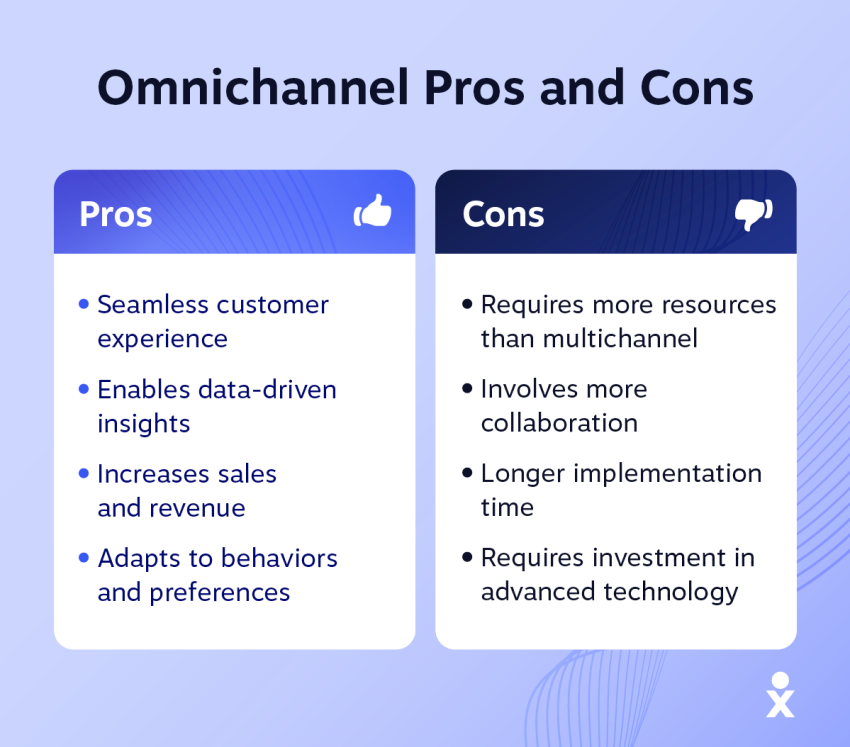
Omnichannel vs. Multichannel Customer Experience
The key difference between omnichannel and multichannel is integration. Multichannel means your customers have multiple channels available to them, each operating independently of the other. Omnichannel, on the other hand, means those channels are connected to create a seamless experience.
In a multichannel setup, a customer may need to repeat their request when switching from a web chat to a phone call because the channels don’t exchange information. In an omnichannel setup, the phone agent already has the chat transcript and full customer history, allowing the conversation to continue without interruption.
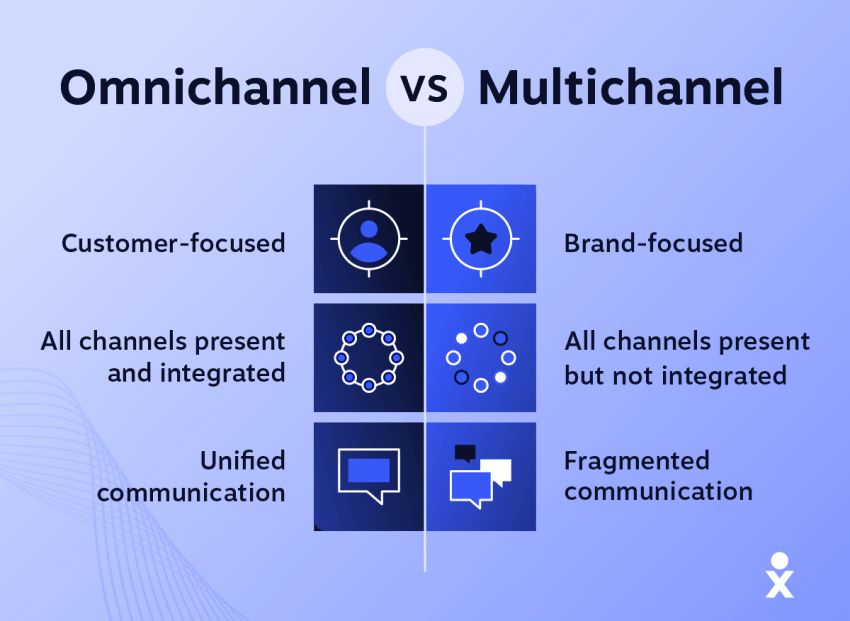
Here’s a clear breakdown:
| Feature | Multichannel experience | Omnichannel experience |
|---|---|---|
| Focus | Brand-centric; channels work in silos. | Customer-centric; channels are integrated. |
| Data | Customer data is separate for each channel. | Customer data is shared across all channels in real-time. |
| Customer Journey | Fragmented; customers may have to repeat information. | Seamless; customers can switch channels without interruption. |
| Goal | Be present on multiple channels. | Provide a consistent and unified experience. |
Benefits of Omnichannel Customer Experience
When it comes to customer interactions, it’s better to be more connected. An intelligent customer experience through omnichannel communications puts your customers first and allows them to connect with you through their most preferred communication channels.
Increase customer loyalty
An omnichannel approach is a powerful tool for cultivating stronger connections with existing customers and building unwavering customer loyalty. When businesses consistently meet customer expectations and customer service goals while limiting pain points across channels, it builds trust and ensures customer retention.
Reduce churn by providing helpful support precisely when and where your customers need it — whether through readily available live chat, responsive omnichannel support on social media, convenient text messaging, or an easily accessible toll-free number.
Boost sales and revenue
Better case handling builds trust and keeps customers coming back — but the advantages of omnichannel support go well beyond that. Studies show that even a modest 5% increase in retention can dramatically boost sales and profits, sometimes by as much as 95%.
An omnichannel experience enables smoother transitions between channels, enabling you to capture more sales opportunities across multiple touchpoints. Customers who engage with your brand across multiple platforms are more likely to spend more. An effective omnichannel marketing strategy maximizes your chances of conversion by engaging potential customers on their preferred channels throughout their entire customer journey.
Collect valuable customer insights
Omnichannel integration provides a holistic view of all customer interactions. These interactions generate valuable customer data that you can effectively collect, analyze, and leverage for insightful reporting and accurate forecasting.
This data-driven approach enables a deeper understanding of customer behavior, preferences, and trends. These insights are invaluable for informing your strategic decision-making and empowering you to personalize conversations.
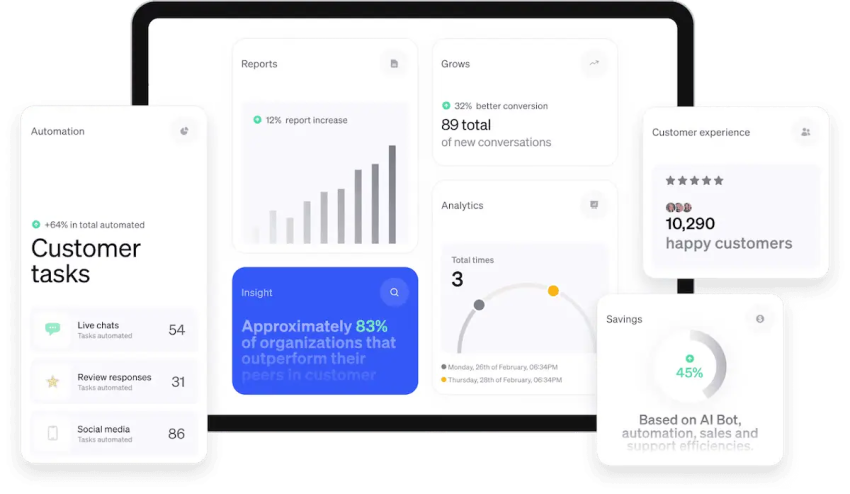
The Role of AI in Omnichannel CX
Artificial intelligence drives modern omnichannel strategy. AI can sift through large datasets to automate and personalize interactions at scale.
- AI-powered personalization: AI algorithms can predict customer needs and deliver tailored content, product recommendations, and offers at every touchpoint. This is crucial, as 80% of customers are more likely to do business with companies that offer personalized experiences.
- Predictive customer service: By analyzing behavioral data, AI can anticipate customer issues and offer proactive solutions, such as sending a helpful article before a customer needs to contact support.
- Intelligent automation: AI-powered chatbots and virtual assistants provide 24/7 support for routine inquiries, freeing human agents to handle more meaningful and complex issues. They can also instantly route customers to the right department with full context, helping reduce resolution times.
How To Create an Omnichannel Customer Experience in 7 Steps
Whether you already have elements of an omnichannel strategy in place or are embarking on a new implementation, a successful omnichannel approach requires careful planning and execution. Here’s a 7-step guide to get you up and running effectively.
1. Map the customer journey
Start your customer journey mapping by creating detailed customer personas, using insights from demographics, preferences, and behaviors across multiple channels.
Next, meticulously document every customer touchpoint and interaction your customers have with your business across multiple communication channels. This encompasses everything from initial awareness and research to the crucial post-purchase interactions. It’s also important to pinpoint potential pain points or areas of frustration along the way.
Leverage the power of automation within your customer experience technology to collect data on customer interactions, customer feedback, and customer preferences at each stage of their journey. This provides invaluable behavioral insights.
Collaborate with key stakeholders and cross-functional teams, including marketing, sales, omnichannel customer service, and product development. Each team brings a unique perspective to customer data, making their input essential for fully understanding the customer journey and anticipating what customers need and want.
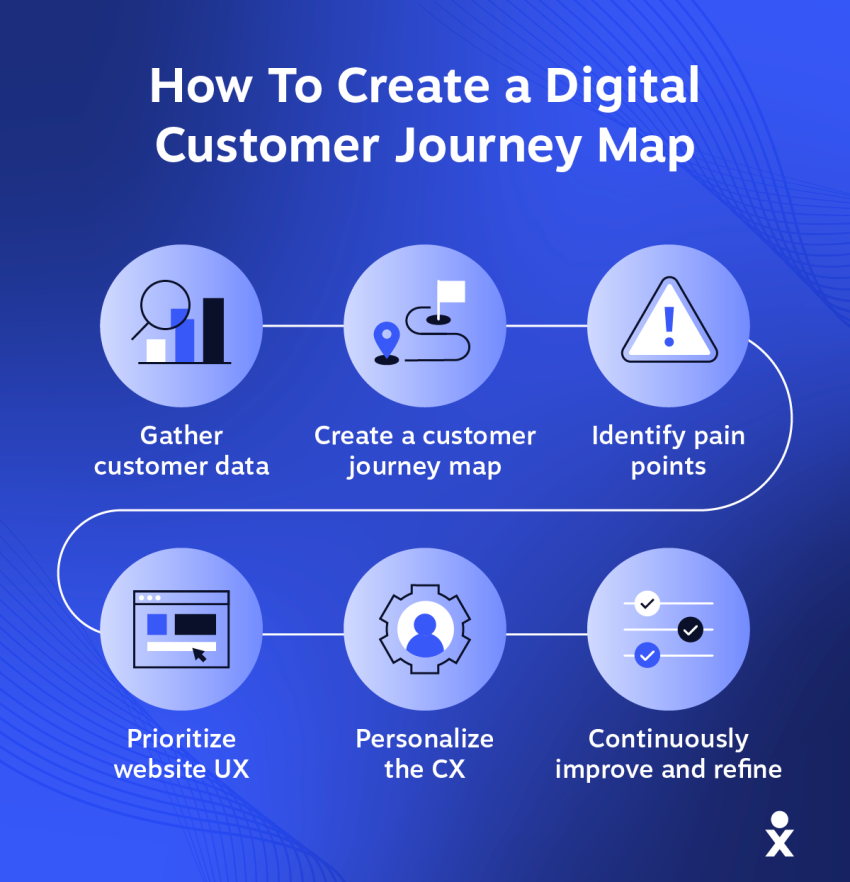
2. Integrate customer data management
A successful omnichannel strategy depends on having a unified, 360-degree view of each customer. This centralized perspective helps businesses personalize customer experiences, anticipate needs, and resolve issues more efficiently.
One effective way to achieve this is through integrated data management. While not the only solution, a Customer Data Platform (CDP) can help consolidate customer data from multiple sources into one place.
Benefits of centralized customer data include:
- Simplified understanding of individual customer paths
- Personalized interactions driven by real-time customer insights
- Improved team efficiency, as agents have immediate access to relevant information
- Consistent communication across channels, powered by an omnichannel platform and supported by unified communications as a service (UCaaS)
- Stronger integration via an omnichannel CRM, which ensures every team member stays informed
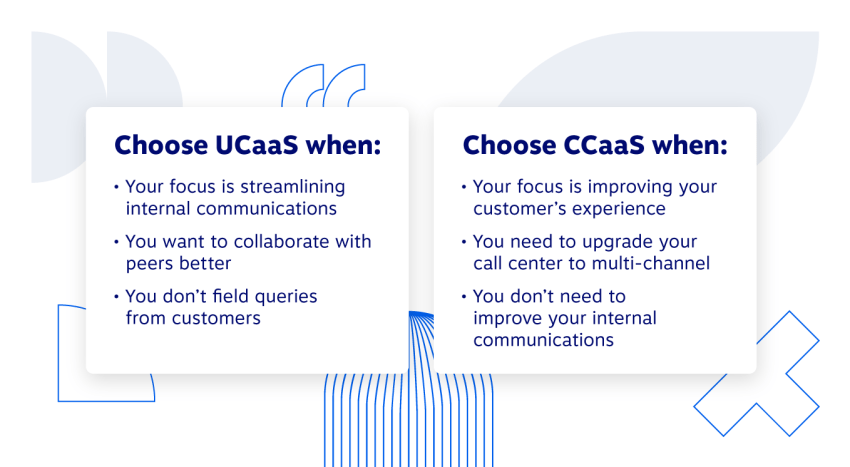
For example, if a customer interacts with your brand on social media, makes purchases through your website, and contacts support via a mobile app, integrated data ensures all relevant information is available across platforms. This empowers your team to deliver fast, personalized support and relevant product recommendations based on a full picture of the customer’s history.
3. Train and empower your agents for cross-channel collaboration
Comprehensive training equips your support agent with a deeper understanding of the entire customer lifecycle, even the touchpoints outside their direct responsibilities. This enables agents in an omnichannel contact center to offer more informed support experience, addressing customer concerns with full context about previous interactions across all communication channels.
Agents need visibility into the customer’s entire history with the brand, regardless of whether those interactions occurred via email, chat, phone, or in-store. Empowering agents to collaborate effectively fosters information flow across different departments within your organization.
For instance, a customer service agent who identifies a recurring technical issue can collaborate directly with the product development team to address the root cause, preventing future issues and significantly improving the omnichannel experience.
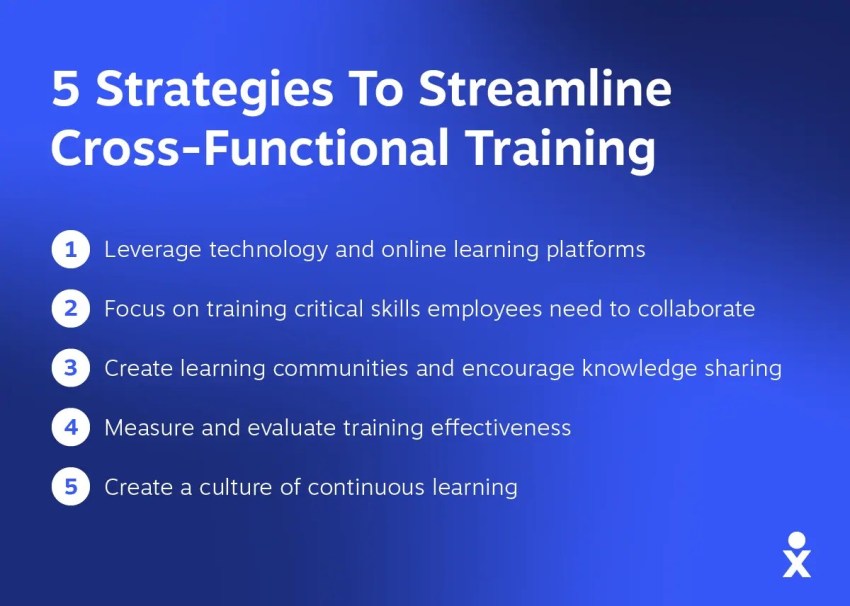
4. Prioritize mobile experience and integration
Customers expect prompt, real-time assistance. Offering real-time omnichannel support through live chat, intelligent chatbots powered by artificial intelligence, or responsive social media channels can significantly enhance their omnichannel customer service experience. Ensure these support options are integrated with your omnichannel CRM, providing your customer service agents with a complete picture of all previous customer messages and interactions across every communication channel.
Social media also plays an important role in modern customer interactions, as a platform for support and engagement and as a valuable source of customer feedback. Businesses can integrate social media into their omnichannel experience by:
- Providing quick support responses to customer inquiries and customer concerns on platforms like Instagram and Facebook
- Using social listening tools to collect customer feedback and identify potential issues
- Sharing personalized recommendations and offers through direct messages based on customer behavior and customer preferences
Just as with the mobile experience, make it easy for customers to switch from a live chat session to a phone call or email without repeating any information.
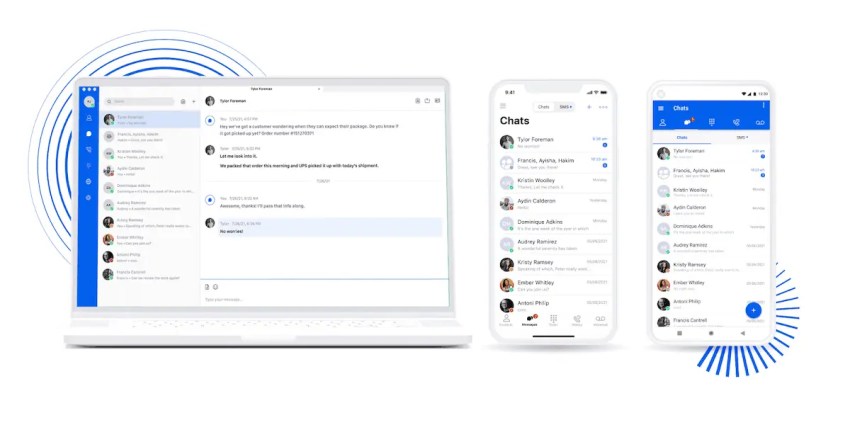
5. Establish real-time, AI-enhanced support
To deliver a strong omnichannel experience, customers need timely support — no matter the channel they choose. Whether it’s live chat, phone, social media, or in-store assistance, support should feel consistent, responsive, and connected.
Here’s how to make that happen:
- Equip agents with access to real-time data across all customer touchpoints
- Integrate your communication tools so that a conversation can move from chat to voice to video frictionlessly
- Use AI-powered chatbots to offer instant answers to common questions while intelligently routing complex issues to the right human agent
Real-time, connected support empowers customers to get help exactly when and where they need it — no repeating themselves, no unnecessary delays. This not only resolves issues faster but also helps improve customer experiences.

6. Collect customer feedback
Understanding how customers feel at each stage of their journey is key to optimizing the omnichannel experience. Instead of waiting until the end, gather feedback throughout the process.
Some effective tactics to consider:
- Send quick surveys after key interactions (such as post-chat or after purchase)
- Encourage customer reviews on your website, app, and social platforms
- Add in-the-moment feedback tools to your mobile app or physical store
Once collected, analyze this input to spot trends and take meaningful action. Most importantly, close the feedback loop by letting customers know what’s changed based on their input. When you implement their feedback, it shows you value the voice of the customer and builds brand trust and relationships.
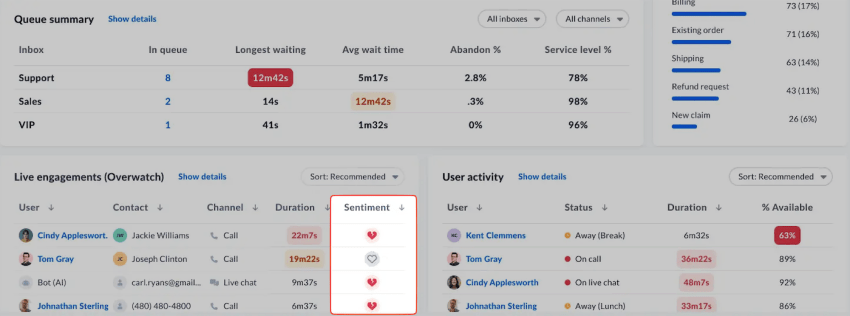
7. Refine cross-channel analytics
Your analytics are only as powerful as the data behind them. To get a full picture of your omnichannel experience, make sure to consistently collect, unify, and track customer interactions and data across all touchpoints. That includes both online and offline channels.
Look for drop-off points in the customer journey and identify which channels are most effective for different interactions. Use these insights to refine your strategy, optimize your resource allocation, and improve the customer experience.
For instance, if analytics show a significant drop-off between your customers browsing on mobile and purchasing on desktop, you can investigate and resolve the issue. Acting on these insights allows you to fine-tune your strategy and continue to make improvements over time.
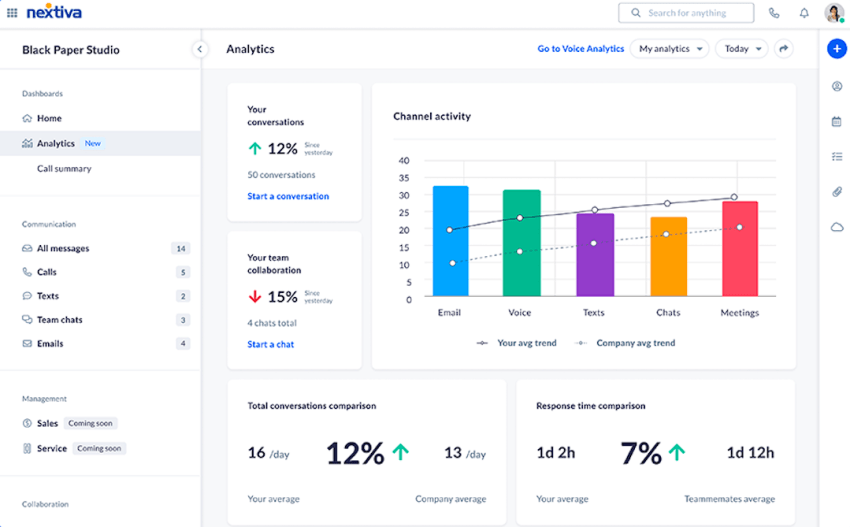
Best Omnichannel Tools and Software
The right technology is essential for unifying your channels. Here are some of the best omnichannel software platforms available:
| Software | Starting price | Key features | Best for |
| Nextiva | Starts at $15/user/month | Unifies phone, video, chat, email, and SMS on a single platform with an integrated CRM. | Businesses looking for a single, unified communications system to handle all customer interactions without switching tools. |
| HubSpot Service Hub | Free tools available; Paid plans start at $20/seat/month | Built on HubSpot’s native CRM, providing a complete view of the customer’s sales and marketing journey. Includes ticketing, live chat, and automation. | Companies already using HubSpot’s ecosystem or those wanting deep integration between their support, sales, and marketing teams. |
| Zendesk | Starts at $19/user/month | A service-first CRM that combines all communication channels into a simple, scalable dashboard with powerful automation, reporting, and AI bots. | Teams of all sizes, from small businesses needing a simple tool to large organizations managing high support volumes. |
| Salesforce Service Cloud | Starts at $25/user/month | Offers a 360-degree customer view with AI-powered suggestions. Deeply integrates with Salesforce sales and marketing data. | Large teams and existing Salesforce users who need robust automation and highly personalized customer interactions. |
| Freshdesk | Free plan available; Paid plans start at $15/user/month | An intuitive, cloud-based platform that organizes all conversations in one place. Known for its user-friendly layout, affordability, and easy setup. | Small to medium-sized businesses looking for an affordable, easy-to-use solution that can scale with them as they grow. |
Omnichannel CX Examples
These real-world examples show how different industries use omnichannel strategies to deliver frictionless, customer-centric journeys across touchpoints.
Retail
A customer discovers a dress on a brand’s social media feed and clicks through to the mobile product page. After adding it to their wishlist, they later visit a physical store to try it on. The sales associate — using an omnichannel platform — pulls up their wishlist and browsing history to offer personalized recommendations. The customer purchases the dress via an in-store tablet and selects home delivery.
With this omnichannel retail strategy, every touchpoint of the online shopping experience is connected through the omnichannel CRM, ensuring consistent omnichannel messaging and a cohesive brand experience, whether the interaction is online, in-store, or mobile.
Banking and finance
A customer starts a loan application online but has questions, so they open a live chat on the bank’s website. The support agent can view their application details and provide relevant assistance. Later, the customer visits a branch, where a teller accesses the same application and chat history. With a unified view powered by an omnichannel CRM, the process continues smoothly, without the customer repeating themselves.
Healthcare
A patient receives an SMS appointment reminder and uses the link to reschedule via a mobile app. Later, they send a follow-up question through secure messaging. A provider responds, and the full interaction history is stored in their electronic health record — available across all departments and platforms. This unified approach ensures consistent messaging and support across every customer touchpoint, whether by phone, app, or in person.
Hospitality
A traveler books a hotel online and later receives personalized recommendations via email. During their stay, they request room service through the mobile app. Their preferences are tracked and used for future visits and targeted promotions.
After checkout, a feedback survey is automatically sent, closing the feedback loop. This is how omnichannel platforms in hospitality build lifelong relationships — by anticipating needs and remembering guest preferences at every stage.
FinTech
Canopy Technology, a fintech company offering responsible lending for students, needed a way to handle complex customer cases and connect with clients across multiple channels. To level up their customer service without enterprise-level overhead, Canopy turned to Nextiva’s omnichannel contact center solution.
With Nextiva, Canopy gained the tools to meet customers wherever they are — email, phone, live chat, or SMS — while maintaining full customer context. This omnichannel platform gave them the agility to rival much larger institutions without the hefty investment.

“This tool allows us to create our own outreach and servicing strategies where we can meet our clients in their channel of choice, exactly the aspiration of most legacy loan servicers and banks.”
~ Tom Greco
Measuring the Success of Your Omnichannel Strategy
To better understand the impact of your omnichannel strategy, track relevant call center metrics and key performance indicators (KPIs). These metrics provide valuable insights into what’s working well and where there’s room for improvement in your efforts to deliver a good omnichannel customer experience.
- Customer lifetime value (CLTV): This metric forecasts the total revenue a single customer is expected to generate for your business over the entire relationship with your brand. A successful omnichannel approach often leads to a higher CLTV.
- Customer acquisition cost (CAC): CAC represents the average cost of acquiring a new customer. Optimizing your omnichannel marketing efforts can lead to a more efficient acquisition process and potentially lower this cost.
- Customer retention rate: This is the percentage of your existing customers who remain loyal to your brand over a specific period. A positive omnichannel experience directly contributes to higher customer retention.
- CSAT: Measuring customer satisfaction levels after interactions on each channel provides a granular view of your omnichannel customer service effectiveness.
- Net Promoter Score® (NPS): NPS measures how likely customers are to recommend your brand to others. Delivering a consistent, positive experience across all channels is one of the strongest ways to boost your NPS.
- Channel usage and preference: Understanding which preferred channels your customers use most frequently and their preferences for different types of interactions helps you optimize your resource allocation.
- Customer journey completion rate: This metric tracks the percentage of customers who complete key tasks or journeys (such as making a purchase or resolving an issue) across your integrated customer experience.
- Average resolution time: This metric measures the average time it takes to resolve customer concerns across all communication channels. Efficiency here directly impacts customer satisfaction.
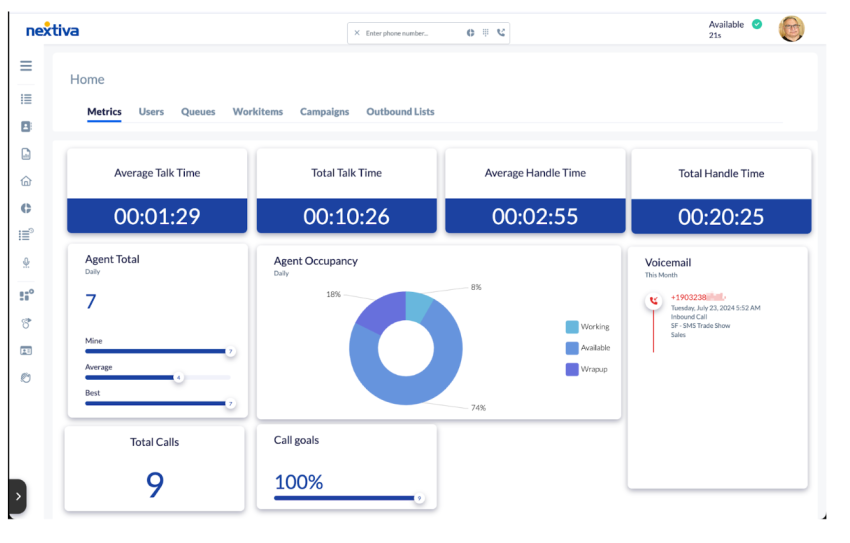
Growing Trends in Omnichannel CX
The way we interact with customers is always evolving. Here are some trends shaping omnichannel customer experience:
- AI-powered personalization: Artificial intelligence can analyze vast amounts of customer data to understand individual customer preferences and deliver highly tailored content, offers, and support across all touchpoints.
- Proactive customer service: The future of great customer service in an omnichannel environment will be increasingly proactive. By leveraging customer data and AI in customer experience, businesses can anticipate customer needs and reach out with solutions or assistance before the customer even encounters an issue.
- New technologies and channels: Technologies like augmented reality (AR) and virtual reality (VR) are beginning to create new and immersive omnichannel experiences, particularly in retail, entertainment, and training. These different channels offer unique ways to engage customers and interact with brands.
- Unified experiences: While new technologies emerge, the core principle is the same: customers want effortless transitions between different channels and a consistent brand experience regardless of how they interact with a business. The focus will continue to be on breaking down silos and creating a frictionless customer journey.
How Nextiva Empowers Businesses to Deliver Omnichannel CX
Nextiva offers a powerful CX platform to help businesses deliver exceptional omnichannel customer experiences. By unifying voice, video, chat, email, and SMS, our communications system ensures teams can connect with customers on their preferred channels without losing context.
Our integrated CRM gives agents a complete view of the customer lifecycle, enabling more personalized support, faster issue resolution, and stronger customer loyalty. Plus, with centralized data, real-time feedback, and actionable insights, Nextiva can help your business refine its strategies and create consistent experiences that drive growth. Try it today.
The customer experience solution teams love.
Sales and support teams use Nextiva to deliver a better, more personalized customer experience at scale.
Omnichannel CX FAQs
The goal isn’t to be everywhere, but to be everywhere your customers are. A successful omnichannel strategy focuses on identifying the channels your specific customers prefer and then seamlessly integrating them. It’s about quality and consistency over quantity.
The most common hurdles are:
Data integration: Breaking down data silos so that information from your CRM, marketing platform, and sales software can be shared in real-time is often the biggest technical challenge.
Organizational alignment: Omnichannel requires marketing, sales, and customer service teams to work together from a shared playbook, which can be a significant cultural shift.
Technology costs: Investing in the right integrated platform requires a budget and a clear understanding of the expected return on investment (ROI).
No, it’s a scalable concept. While large corporations are famous examples, the rise of cloud-based software and integrated platforms has made omnichannel strategies accessible and affordable for small and medium-sized businesses (SMBs). The core principles of understanding the customer journey and providing a consistent experience apply to any-sized business.
Omnichannel is the front-end customer experience strategy. It’s what the customer sees and feels — a seamless journey across channels.
Unified commerce is the back-end technology architecture that makes omnichannel possible. It refers to a single platform that merges all business data (like inventory and customer profiles) into one central place.
In short, unified commerce is the engine that powers the omnichannel car.
Omnichannel marketing means creating a unified customer experience across all marketing channels. Instead of treating social media, email, website, and physical stores as separate silos, this strategy integrates them to create a seamless and consistent customer journey. Omnichannel marketing allows customers to start a conversation on one channel and continue on another without losing context. It helps create a continuous brand conversation around the customer.
They are two halves of the same customer journey.
Omnichannel marketing focuses on the pre-purchase experience. It’s about creating a single, seamless brand story across all your channels — like social media ads and email campaigns — to attract and engage customers.
Omnichannel customer service focuses on the post-purchase experience. It ensures that when a customer needs help — whether via live chat, phone, or in-store — the support they receive is seamless and contextual. The goal is to resolve issues efficiently and strengthen customer loyalty by providing a consistent support experience across all touchpoints.

















 Customer Experience
Customer Experience 








